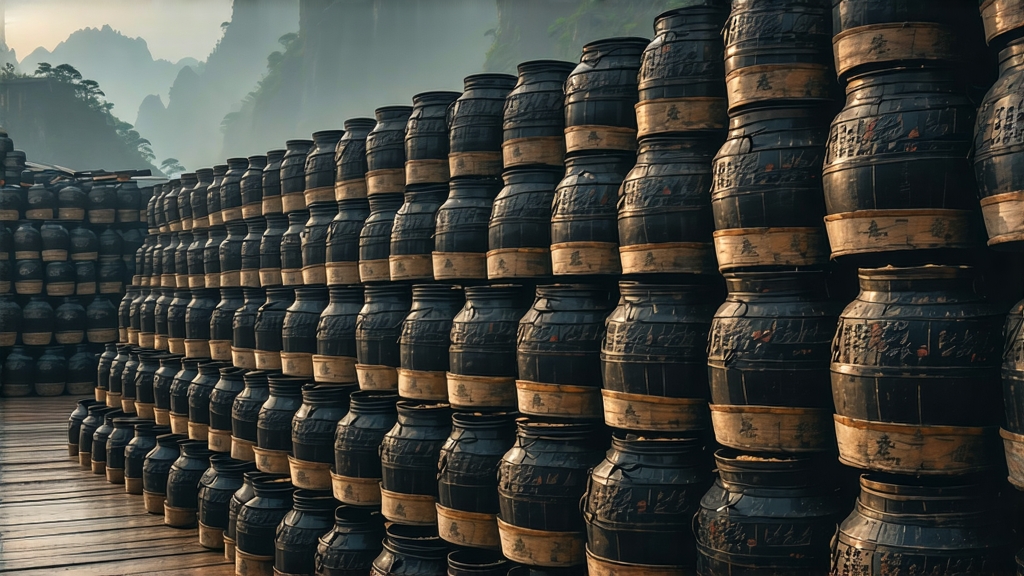
Liu Bao cha, literally “Six Forts tea,” is the quietest celebrity of China’s dark tea family. While Pu-erh hoards headlines, Liu Bao has spent four centuries ferrying miners, merchants and monks across the heat of southern China and the South China Sea. Its story begins around 1500 in the small mountain town of Liu Bao, today part of Wuzhou prefecture in Guangxi. From here, leaf travelled by coolie trail down the Liu River to the Pearl River delta, then by junk to Hong Kong, Malaysia and Singapore, where tin-mine coolies discovered that a daily bowl settled stomachs corroded by cold rice, tinned meat and opium. By 1800 the British Straits Settlements levied import duty on it; by 1900 it was ballast in the holds of clipper ships. The tea had become currency in the tropics, yet remained almost unknown north of the Nanling range.
Liu Bao is not a single recipe but a spectrum of micro-terroirs and maturations. The original six forts—Guliu, Heiping, Yicheng, Xinxu, Siping and the lost sixth whose name vanished with a flooded village—each contributed leaf of slightly different elevation, soil and bush age. Today the protected geographical indication covers the entire Wuzhou region, but collectors still speak of “old Liu Bao taste” versus “new county taste,” the former deeper, with a cooling camphor finish, the latter brighter, with raw cacao notes. Age categories follow Cantonese auction jargon: “clear water” (3–7 years), “yellow ribbon” (8–15), “red ribbon” (16–25) and “iron ribbon” (26+), names once painted on the hemp cloth that sealed bamboo baskets.
Making Liu Bao is a dialogue between fire, water and time. The leaf is a standard pluck of one bud, three or four leaves from the large-leaf Camellia sinensis var. assamica bushes that thrive on the red lateritic soils of Guangxi. After brief outdoor withering the leaves are wok-fired at 280 °C for eight minutes, hot enough to kill green enzymes yet leave a faint vegetal heartbeat. Rolling follows, 40 minutes of mechanical pressure that fractures cell walls without bruising; the twisted strips then rest for three hours, allowing residual moisture to migrate outward. The critical step is “pile-fermentation,” wodui, borrowed from Yunnan but shorter and cooler: 10–15 days at 55 °C, turned twice daily, monitored by nose rather than thermometer. When the leaf core turns walnut-brown and exudes the scent of dried longan, it is spread under sun for final drying to 10 % moisture. At this point the tea is maocha, rough tea, still a teenager.
What gives Liu Bao its maritime soul is the post-fermentation journey. Traditionally the maocha is steamed, packed into forty-kilogram bamboo baskets lined with dried banana leaves, then stacked in the humid hold of a riverside warehouse. For six months to three years the baskets breathe the monsoon air; yeasts and molds bloom, die and bloom again, slowly oxidizing residual polyphenols into theaflavins and thearubigins that darken the liquor and soften the edges. Modern factories replicate the climate with 28 °C and 85 % RH rooms, but connoisseurs swear the river breeze adds a petrichor note impossible to synthesize. After aging, the leaf is re-fired at 80 °C to stabilize, then graded into ten commercial numbers: the higher the number, the older the leaf and the deeper the cup.
Brewing Liu Bao is less ritual than reassurance. A 150 ml Yixing teapot or a lidded gaiwan works equally well; the clay softens acids, the porcelain highlights aroma. Use 6 g of leaf—about two heaping tablespoons—rinsed for five seconds with water just off the boil. Discard the rinse: it washes off the storage dust and awakens the compressed fibers. First infusion: 15 seconds, liquor the color of black cherry. Second: 10 seconds, aroma of wet earth and smoked plums. Third to fifth: add five seconds each, the cup now tasting of dark honey, betel nut and the faintest hint of star anise. A good